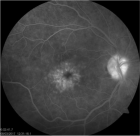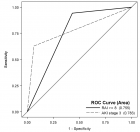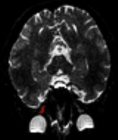Abstract
Research Article
Clinico-epidemiological characteristics and survival outcome of patients with hypertensive crisis at Kassala Hospital, Eastern Sudan
TajEldin M Abdallah*, Abdalazeem A Ibrahem, Ezeldein A Ali, Elbashir G Ahmed and AbdelAziem A Ali
Published: 31 October, 2018 | Volume 3 - Issue 1 | Pages: 029-034
Introduction: Hypertensive crisis (HC) is recognized consequence of inadequate blood pressure (BP) control. A hypertensive crisis is further divided into hypertensive emergency (HT-E) and hypertensive urgency (HT-U).
Method: Using a cross-sectional hospital-based study design, patients who had been diagnosed as having HC between January and October 2017 were consecutively recruited in the study. The criteria proposed by the Seventh Joint National Committee were used for the definition of HC.
Result: A total of 81 (.81%) patients newly diagnosed as having HC were enrolled in the study. Of these patients, 50 (61.7 %) patients met criteria for HT-E, while 31 (38.3%) patients had HT-U. Renal impairment (16%), stroke (30.8%), acute coronary syndrome (13.6%) and heart failure (22.2%) were predominant complications associated with HT-E. Out of 81 study subjects, 13 (16%) patients died. Although there was no significant difference in residence, history of smoking, Diabetes mellitus and history of alcohol consumption between groups, old age (P=.o22), male gender(.046), history of hypertension(.007), history of non-governmental employee(.003), poor compliance (p=.002) and high case fatality rate (p=.041) were significantly associated with hypertensive emergency (HT-E).
Conclusion: This study showed that HT-E has high case fatality rate among patients admitted with hypertensive crisis at kassala teaching Hospital. Therefore early detection of hypertension and appropriate management are the main stay for reducing morbidity and mortality among patients with hypertensive crisis.
Read Full Article HTML DOI: 10.29328/journal.jcicm.1001017 Cite this Article Read Full Article PDF
Keywords:
Hypertension; Crisis; Emergency; Urgency; Sudan
References
- Salkic S, Batic-Mujanovic O, Ljuca F, Brkic S. Clinical Presentation of Hypertensive Crises in Emergency Medical Services. Materia Socio-Medica. 2014; 26: 12-16. Ref.: https://goo.gl/9KGeXB
- World Health Organization. Regional Office for Eastern Mediterranean, Clinical guideline for management of hypertension. EMRO technical publication series, Cairo 2005; Ref.: https://goo.gl/Ptet95
- Federal Ministry of Health (Sudan), World Health Organization (WHO). Sudan - Khartoum STEPS Non-communicable Disease Risk Factors Survey 2005-2006; Ref.: https://goo.gl/szBnzd
- Abdelsatir S, Al-Sofi A, Elamin S, Abu-Aisha H. The potential role of nursing students in the implementation of community-based hypertension screening programs in Sudan. Arab J Nephrol Transplant. 2013; 6: 51-54. Ref.: https://goo.gl/pdC2rE
- Federal Ministry of Health and Sudan Society of hypertension (SSH). Sudan Hypertension Guideline. Non-Communicable Diseases Directorate 2012; Ref.: https://goo.gl/kWQfLR
- Pacheco HG, Victorino NM, Urquiza JP, Castillo AA, Herrera UJ, et al. Patients With Hypertensive Crises Who Are Admitted to a Coronary Care Unit. Clinical Characteristics and Outcomes. J Clin Hypertens (Greenwich). 2013; 15: 210–214. Ref.: https://goo.gl/meULki
- Chobanian AVM Bakris GL, Black HR, Cushman WC, Green LA, et al. The Seventh Report of the Joint National Committee on Prevention, Detection, Evaluation, and Treatment of High Blood Pressure: the JNC 7 report. JAMA. 2003; 289: 2560-2572. Ref.: https://goo.gl/q5yRQe
- Sobrinho S, Correia LC, Cruz C, Santiago M, Paim AC, et al. Occurence rate and clinical predictors of hypertensive pseudocrisis in emergency room care. Arq Bras Cardiol 2007; 88: 579–584. Ref.: https://goo.gl/XApHHX
- O’Brien E, Asmar R, Beilin L, Imai Y, Mancia G, et al. European Society of Hypertension Working Group on Blood Pressure Monitoring. Practice guidelines of the European Society of Hypertension for clinic, ambulatory and self-blood pressure measurement. J Hypertens. 2005; 23: 697–701. Ref.: https://goo.gl/y9Q92F
- World Medical Association. declaration of Helsinki .Ethical research involving Human Subjects. JAMA 2013; 310: 2191-2194. Ref.: https://goo.gl/LWrbVN
- Cerrillo MR, Hernandez PM, Pinilla CF, Claros NM, Otero ML. Hypertensive Crises: prevalence and clinical aspects. Rev Clin Esp 2002; 202: 255-258. Ref.: https://goo.gl/A4gPTK
- Zampaglione B, Pascale C, Marchisio M, Cavallo-Perin P. Hypertensive urgencies and emergencies. Prevalence and clinical presentation. Hypertension. 1996; 27: 144-147. Ref.: https://goo.gl/aSuoME
- Monteiro F, Anunciac Filhoetal F. Prevalence of true hypertensive crises and appropriateness of the medical management in patients with high blood pressure seen in a general emergency room. Arq Bras Cardiol. 2008; 90: 247–251. Ref.: https://goo.gl/9vRmQL
- Almas A, Ghouse A, Iftikhar AR, Khursheed M. Hypertensive Crisis, Burden, Management, and Outcome at a Tertiary Care Center in Karachi. International Journal of Chronic Diseases 2014; 1-7. Ref.: https://goo.gl/oZiBy7
- Nobre F, Chauchar F, Viana J, Pereira G, Lima N. Factors related to the clinical demand of a emergency service of a general and your understanding. Arq Bras Cardiol 2002; 78: 156-158.
- Al-Bannay R, Husain A. Hypertensive crisis. Clinical presentation, comorbidities and target organ involvement. Saudi Med J. 2010; 31: 916-920. Ref.: https://goo.gl/p3AGmq
- Piyanuttapull S, Angsanakul J. Prevalence of Hypertensive Emergency in Emergency Room of Rajavithi Hospital. J Hypertens Manag. 2016; 2: 1-4. Ref.: https://goo.gl/yQntCv
- Martin JF, Higashiama E, Garcia E, Luizon MR, Cipullo JP. Hypertensive crisis profile. Prevalence and clinical presentation. Arq Bras Cardiol 2004; 83: 125–130. Ref.: https://goo.gl/6ug39M
- Vilela-Martin JF, Vaz-de-Melo RO, Kuniyoshi CH, Abdo ANR, Toledo JCY. Hypertensive crisis: clinical–epidemiological profile. Hypertension Research. 2011; 34: 367–371. Ref.: https://goo.gl/BGVkDP
- Moreira GC, Cipullo JP, Martin JF, Ciorlia LA, Godoy MR, et al. Evaluation of the awareness, control and cost-effectiveness of hypertension treatment in a Brazilian city: populational study. J Hypertens. 2009; 27: 1900–1907. Ref.: https://goo.gl/nkHFRr
- Julius S. Borderline hypertension: an overview. Med Clin North Am. 1977; 61: 495-511. Ref.: https://goo.gl/qJF9GJ
- Messerli F, Garavaglia GE, Schmieder RE, Sundgaard-Riise K, Nunez BD, et al. Disparate cardiovascular findings in men and women with essential hypertension. Ann Intern Med 1987; 107: 158-161. Ref.: https://goo.gl/7QZtbm
- Vilela MJ, Érika H, Evandro G, Rizzatti LM, Paulo CJ. Hypertensive crisis profile: prevalence and clinical presentation. Arq. Bras.Cardiol. 2004; 83: 125-130. Ref.: https://goo.gl/byofSQ
- Lanthier L, Malenfant L, Lacelle MJ. Characteristics of hypertensive emergencies and urgencies at Sherbrooke between 1998 and 2006. Can J Gen Intern Med. 2008; 3: 38–40. Ref.: https://goo.gl/eLyUoA
- Serrano VC, Freites GQ, Delgado LL, García BMF. Behavior of the hypertensive crisis present in patients from NA integral diagnosis medical center. Rev Cubana Med Gen Integr. 2009; 25: 129–135. Ref.: https://goo.gl/4EriVG
- Katz JN1, Gore JM, Amin A, Anderson FA, Dasta JF, et al. Practice patterns, outcomes, and end‐organ dysfunction for patients with acute severe hypertension: the Studying the Treatment of Acute hyperTension (STAT) registry. Am Heart J. 2009; 158: 599‐606. Ref.: https://goo.gl/ND9dbL
- Badheka A, Shenoy M, Rathod A, Tuliani T, Afonso L. Long‐term mortality and role of troponin elevation in hypertensive emergencies. Am J Cardiol. 2012; 109: 600. Ref.: https://goo.gl/7gj7aw
- AlBannaya R, Husain A, Böhm M, Wagenpfeil S. Outcomes after hypertensive crisis: Comparison between diabetics and non-diabetics. IJC Metabolic & Endocrine 2015; 7: 25-30. Ref.: https://goo.gl/QyYUdC
Figures:

Figure 1
Similar Articles
-
Critical Management of Status EpilepticusFarahnaz Fallahian*,Seyed MohammadReza Hashemian*. Critical Management of Status Epilepticus. . 2017 doi: 10.29328/journal.jcicm.1001004; 2: 001-015
-
Comparative Hemodynamic Evaluation of the LUCAS® Device and Manual Chest Compression in Patients with Out-of-Hospital Cardiac ArrestMirek S,Opprecht N*,Daisey A,Milojevitch E,Soudry- Faure A,Freysz M. Comparative Hemodynamic Evaluation of the LUCAS® Device and Manual Chest Compression in Patients with Out-of-Hospital Cardiac Arrest. . 2017 doi: 10.29328/journal.jcicm.1001005; 2: 016-024
-
Knowledge, attitude and practices associated with diagnosis and management of Skin and Soft Tissue Infections (SSTIs) among Pediatric Residents and Physicians in a Tertiary Hospital in United Arab Emirates (UAE)Eiman Al Blooshi,Farah Othman,Abeer Al Naqbi,Majid Al Rumaithi,Khawla Fikry,Mariam Al Jneibi,Hossam Al Tatari*. Knowledge, attitude and practices associated with diagnosis and management of Skin and Soft Tissue Infections (SSTIs) among Pediatric Residents and Physicians in a Tertiary Hospital in United Arab Emirates (UAE) . . 2017 doi: 10.29328/journal.jcicm.1001007; 2: 034-039
-
Unusual presentation of a bilateral basilar stroke: BradycardiaZidouh S*,Jidane S,Nabhani T,Chouaib N,Sirbou R,Belkouch,Belyamani L. Unusual presentation of a bilateral basilar stroke: Bradycardia. . 2017 doi: 10.29328/journal.jcicm.1001008; 2: 040-041
-
Sinking Skin Flap SyndromeLiew BS*,Rosman AK,Adnan JS. Sinking Skin Flap Syndrome. . 2017 doi: 10.29328/journal.jcicm.1001009; 2: 042-048
-
Clinico-epidemiological characteristics and survival outcome of patients with hypertensive crisis at Kassala Hospital, Eastern SudanTajEldin M Abdallah*,Abdalazeem A Ibrahem,Ezeldein A Ali,Elbashir G Ahmed,AbdelAziem A Ali. Clinico-epidemiological characteristics and survival outcome of patients with hypertensive crisis at Kassala Hospital, Eastern Sudan. . 2018 doi: 10.29328/journal.jcicm.1001017; 3: 029-034
-
Update on Phenobarbital for Alcohol Withdrawal Syndrome in Intensive CareRukma Parthvi*,Parker Agne. Update on Phenobarbital for Alcohol Withdrawal Syndrome in Intensive Care. . 2019 doi: 10.29328/journal.jcicm.1001023; 4: 036-039
-
Brainstem Death due to hypertension induced brain hemorrhageSatyajit Patra*,Sreeraj Suresh. Brainstem Death due to hypertension induced brain hemorrhage. . 2019 doi: 10.29328/journal.jcicm.1001025; 4: 042-043
-
Embolic Septic Emboli with MRSA: A different sourceChristian Castillo Latorre*,Mariela Rivera Agosto,Ilean Lamboy Hernandez,Mariana Mercader Perez,Dominic Sanchez Paredes,Marisol Santiago Irizarry,Jose Gutierrez Nuñez Onix,Cantres Fonseca,Alfonso Torres Palacios,William Rodriguez Cintron. Embolic Septic Emboli with MRSA: A different source. . 2019 doi: 10.29328/journal.jcicm.1001026; 4: 044-047
-
Evaluation of microbial contamination in a surgical department of a Romanian military emergency hospital - A case studyBogdan-Ioan Coculescu*,Elena Claudia Coculescu. Evaluation of microbial contamination in a surgical department of a Romanian military emergency hospital - A case study. . 2021 doi: 10.29328/journal.jcicm.1001037; 6: 026-028
Recently Viewed
-
The Power of Potentized Complementary Medicines at Nanoscale for Infectious Diseases ManagementSiddharth Agarwal*,Sapna Agarwal,Shreyash Dayal. The Power of Potentized Complementary Medicines at Nanoscale for Infectious Diseases Management. J Clin Intensive Care Med. 2025: doi: 10.29328/journal.jcicm.1001054; 10: 023-030
-
A Comparative Study of Metoprolol and Amlodipine on Mortality, Disability and Complication in Acute StrokeJayantee Kalita*,Dhiraj Kumar,Nagendra B Gutti,Sandeep K Gupta,Anadi Mishra,Vivek Singh. A Comparative Study of Metoprolol and Amlodipine on Mortality, Disability and Complication in Acute Stroke. J Neurosci Neurol Disord. 2025: doi: 10.29328/journal.jnnd.1001108; 9: 039-045
-
Computational Models in Systems and Synthetic Biology: Short OverviewMarian Gheorghe*. Computational Models in Systems and Synthetic Biology: Short Overview. Arch Biotechnol Biomed. 2024: doi: 10.29328/journal.abb.1001037; 8: 001-002
-
Benzothiazole-derived Compound with Antitumor Activıiy: Molecular Structure Determination Using Density Functional Theory (Dft) MethodHacer Gumus*. Benzothiazole-derived Compound with Antitumor Activıiy: Molecular Structure Determination Using Density Functional Theory (Dft) Method. Ann Proteom Bioinform. 2024: doi: 10.29328/journal.apb.1001023; 8: 001-007
-
Factors Associated with Elevated Transcranial Doppler Ultrasound Velocities in Children With Sickle Cell Anemia in Mwanza, TanzaniaGeorgina George Balyorugulu, Emmanuela Ambrose, Patrick S Ngoya, Yusuf S Jamnagerwalla, Iddi S Buri, Primrose Songoro, Protas D Komba. Factors Associated with Elevated Transcranial Doppler Ultrasound Velocities in Children With Sickle Cell Anemia in Mwanza, Tanzania. J Adv Pediatr Child Health. 2023: doi: 10.29328/journal.japch.1001058; 6: 033-038
Most Viewed
-
Feasibility study of magnetic sensing for detecting single-neuron action potentialsDenis Tonini,Kai Wu,Renata Saha,Jian-Ping Wang*. Feasibility study of magnetic sensing for detecting single-neuron action potentials. Ann Biomed Sci Eng. 2022 doi: 10.29328/journal.abse.1001018; 6: 019-029
-
Evaluation of In vitro and Ex vivo Models for Studying the Effectiveness of Vaginal Drug Systems in Controlling Microbe Infections: A Systematic ReviewMohammad Hossein Karami*, Majid Abdouss*, Mandana Karami. Evaluation of In vitro and Ex vivo Models for Studying the Effectiveness of Vaginal Drug Systems in Controlling Microbe Infections: A Systematic Review. Clin J Obstet Gynecol. 2023 doi: 10.29328/journal.cjog.1001151; 6: 201-215
-
Prospective Coronavirus Liver Effects: Available KnowledgeAvishek Mandal*. Prospective Coronavirus Liver Effects: Available Knowledge. Ann Clin Gastroenterol Hepatol. 2023 doi: 10.29328/journal.acgh.1001039; 7: 001-010
-
Causal Link between Human Blood Metabolites and Asthma: An Investigation Using Mendelian RandomizationYong-Qing Zhu, Xiao-Yan Meng, Jing-Hua Yang*. Causal Link between Human Blood Metabolites and Asthma: An Investigation Using Mendelian Randomization. Arch Asthma Allergy Immunol. 2023 doi: 10.29328/journal.aaai.1001032; 7: 012-022
-
An algorithm to safely manage oral food challenge in an office-based setting for children with multiple food allergiesNathalie Cottel,Aïcha Dieme,Véronique Orcel,Yannick Chantran,Mélisande Bourgoin-Heck,Jocelyne Just. An algorithm to safely manage oral food challenge in an office-based setting for children with multiple food allergies. Arch Asthma Allergy Immunol. 2021 doi: 10.29328/journal.aaai.1001027; 5: 030-037

HSPI: We're glad you're here. Please click "create a new Query" if you are a new visitor to our website and need further information from us.
If you are already a member of our network and need to keep track of any developments regarding a question you have already submitted, click "take me to my Query."


















































































































































